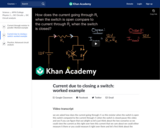
Find the current due to closing a switch using equivalent resistance and Ohm's law.
- Subject:
- Physical Science
- Physics
- Material Type:
- Lesson
- Provider:
- Khan Academy
- Provider Set:
- Khan Academy
- Author:
- Sal Khan
- Date Added:
- 04/13/2018

Find the current due to closing a switch using equivalent resistance and Ohm's law.
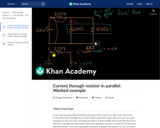
How to calculate the current through a resistor in parallel using equivalent resistance and Ohm's law.

CurvedLand is an applet for showing what the world would look like with different geometry. It is named CurvedLand in tribute to the science fiction novel, Flatland, by Edwin Abbott, which describes the adventures of a two-dimensional being who is visited by a stranger from the third dimension.
One of the central ideas of Einstein's theory of relativity is that space and time curve in response to the matter and energy within them. A curved space is one that doesn't obey the usual laws of Euclidean geometry: the angles of a triangle don't generally add up to 180 degrees, the circumference of a circle isn't pi times the diameter, parallel lines can either converge towards each other or move apart, and so on.
Since the geometry we observe is very close to Euclidean, however, it is hard for most of us to picture what this difference would mean physically. If you draw a circle and a diameter, how could the ratio be anything other than pi? To answer this question, imagine that as you move around in space the shapes of objects appear to distort. This is what happens in curved space. If you draw a circle around yourself and then start walking around it to pace out the circumference, it will look to you like you are walking along a constantly changing ellipse.
CurvedLand illustrates this distortion as it would appear in a two-dimensional curved space. The structure is similar to a mapping program. You can place objects of different shapes in different places in the world and then move around the space to see what they look like from different perspectives.
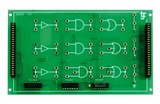
Consequent to the introduction of syllabus by Rani Channamma University Belagavi Karnataka with effect from 2015-6 this new edition is brought out .

Learn about the liquid density by building a Density Liquid Rainbow.
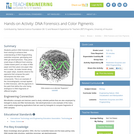
Students perform DNA forensics using food coloring to enhance their understanding of DNA fingerprinting, restriction enzymes, genotyping and DNA gel electrophoresis. They place small drops of different food coloring ("water-based paint") on strips of filter paper and then place one paper strip end in water. As water travels along the paper strips, students observe the pigments that compose the paint decompose into their color components. This is an example of the chromatography concept applied to DNA forensics, with the pigments in the paint that define the color being analogous to DNA fragments of different lengths.
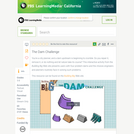
In this interactive activity from the Building Big Web site, investigate dams in distress and decide if they should be repaired, removed, or left alone.
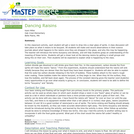
This activity is an entire-class lab experiment that refreshes the concepts of sinking and floating, while introducing the concepts of bouyancy and density using the fizz from sprite (carbon dioxide gas) and raisins.
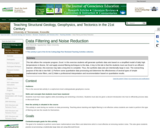
This lab utilizes the computer program, Excel. In this exercise students will generate synthetic data sets based on a simplified model of daily high temperatures in Boone, NC and apply several filtering techniques to the data. A key to this lab is that the students must use Excel in an efficient manner; otherwise, this exercise may take a long time to complete. Thus, the synthetic data sets are intentionally large in size. The overarching purpose of this lab is two-fold: 1) Perform some quantitative data processing and determine the effectiveness of several types of simple mathematical noise filters, and 2) Make a professional interpretation and recommendation based on quantitative results.
(Note: this resource was added to OER Commons as part of a batch upload of over 2,200 records. If you notice an issue with the quality of the metadata, please let us know by using the 'report' button and we will flag it for consideration.)
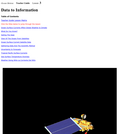
This lesson incorporates sea surface data collected by NASA satellites. Data for three surface characteristics- height, temperature and speed- are used for several activities. Students examine the differences in speed of currents relative to distance from the Equator. Sea surface data anomalies are charted and further analyzed. In addition, surface current data is presented to examine patterns related to El Niño. Note that this is lesson three of five on the Ocean Motion website. Each lesson investigates ocean surface circulation using satellite and model data and can be done independently. See Related URL's for links to the Ocean Motion Website that provide science background information, data resources, teacher material, student guides and a lesson matrix.
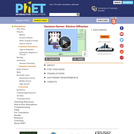
Simulate the original experiment that proved that electrons can behave as waves. Watch electrons diffract off a crystal of atoms, interfering with themselves to create peaks and troughs of probability.
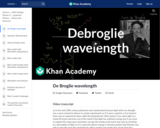
In this video, David explains how Louis De Broglie got his Nobel Prize for the idea of matter having a wavelength.
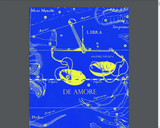
Theory of everything.

David defines the terms amplitude and period for simple harmonic motion and shows how to find them on a graph. Created by David SantoPietro.
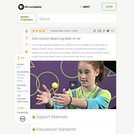
In this video segment adapted from ZOOM, cast members use a hair dryer to balance a ball in a stream of air, seemingly defying gravity.

In this video segment, the ZOOM cast is challenged to keep a ping pong ball in a funnel while the funnel is held upside down, seemingly defying gravity.
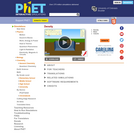
Why do objects like wood float in water? Does it depend on size? Create a custom object to explore the effects of mass and volume on density. Can you discover the relationship? Use the scale to measure the mass of an object, then hold the object under water to measure its volume. Can you identify all the mystery objects?
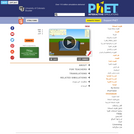
Why do objects like wood float in water? Does it depend on size? Create a custom object to explore the effects of mass and volume on density. Can you discover the relationship? Use the scale to measure the mass of an object, then hold the object under water to measure its volume. Can you identify all the mystery objects?
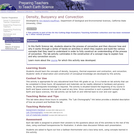
This 3-hour hands-on guided-discovery lab activity teaches students the concepts of density, buoyancy, thermal expansion and convection.
(Note: this resource was added to OER Commons as part of a batch upload of over 2,200 records. If you notice an issue with the quality of the metadata, please let us know by using the 'report' button and we will flag it for consideration.)
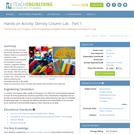
In this first part of a two-part lab activity, students use triple balance beams and graduated cylinders to take measurements and calculate the densities of several common, irregularly shaped objects with the purpose to resolve confusion about mass and density. After this activity, conduct the associated Density Column Lab - Part 2 activity before presenting the associated Density & Miscibility lesson for discussion about concepts that explain what students have observed.